Abstract
This study investigated changes in functional response to splenic T lymphocytes of mitogens following acute and chronic exposure to endurance exercise. Splenic T cell response in vitro to concanavalin A (Con A) and the total number of lymphocytes per spleen were compared between mice assigned to the following treatment conditions: (a) exercise training (EX) by treadmill running (28 m/min, 8 degrees slope for 30 min, 5 times per week for 4 weeks preceded by 2 weeks of endurance build-up), (b) exercise training as above followed by a single, acute bout of exercise to exhaustion (EX + AC) (35 m/min, 8 degrees slope, 30 min to 2 h duration) (c) exposure to the novel environment for 6 weeks without exercise (control), and exposure to the novel environment as in (c) followed by a single, acute bout of exercise to exhaustion. Treadmill running for 6 weeks significantly enhanced succinate dehydrogenase activity in skeletal muscle compared to the sedentary, control condition, and was broadly interpreted as indicative of a training effect. EX mice had significantly reduced splenic lymphocyte proliferative responses to optimal and supraoptimal concentrations of Con A compared with control animals. Incorporation of [3H]thymidine into splenic lymphocytes from EX + AC mice was the most markedly depressed. Total number of lymphocytes per spleen was significantly lower in EX compared with control mice. These results suggests that chronic exercise challenge in mice is associated with T lymphocyte hyporesponsiveness in the secondary lymphoid organs, such as the spleen.
Full text
PDF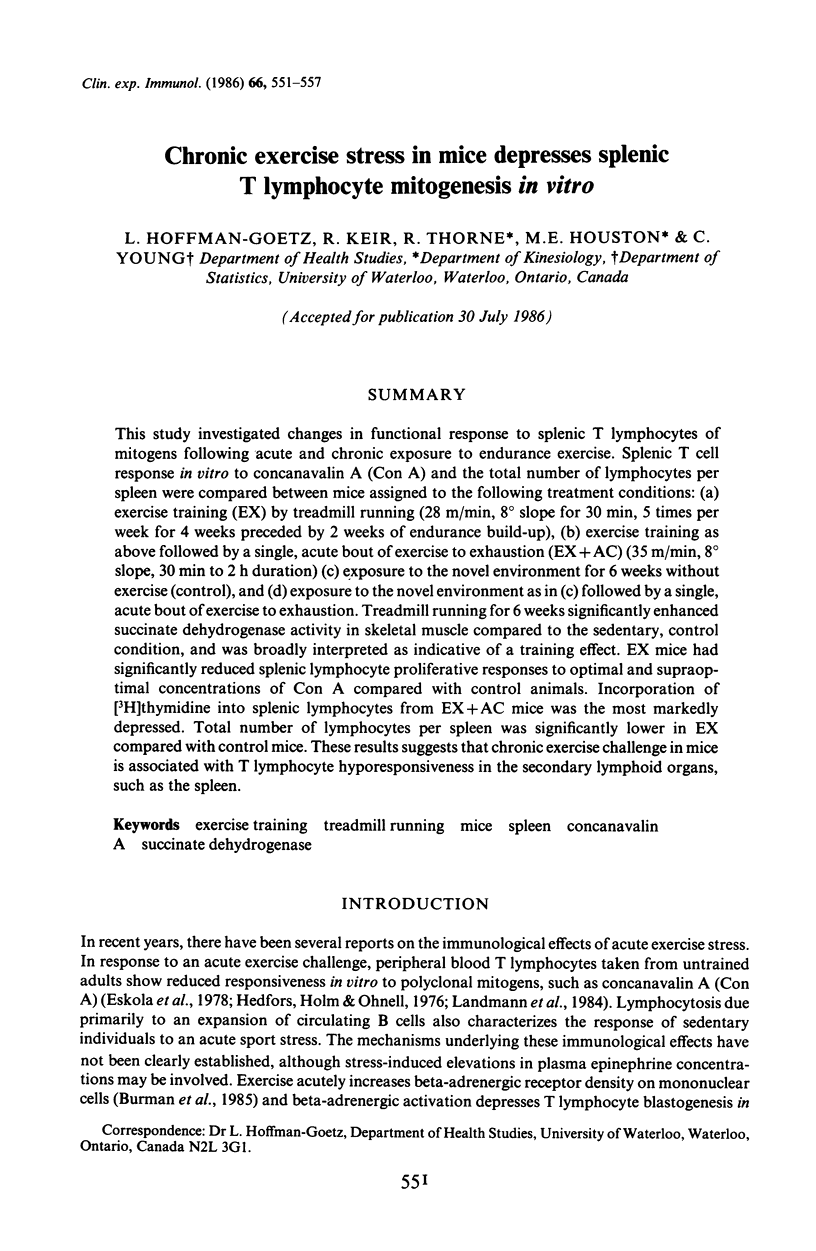
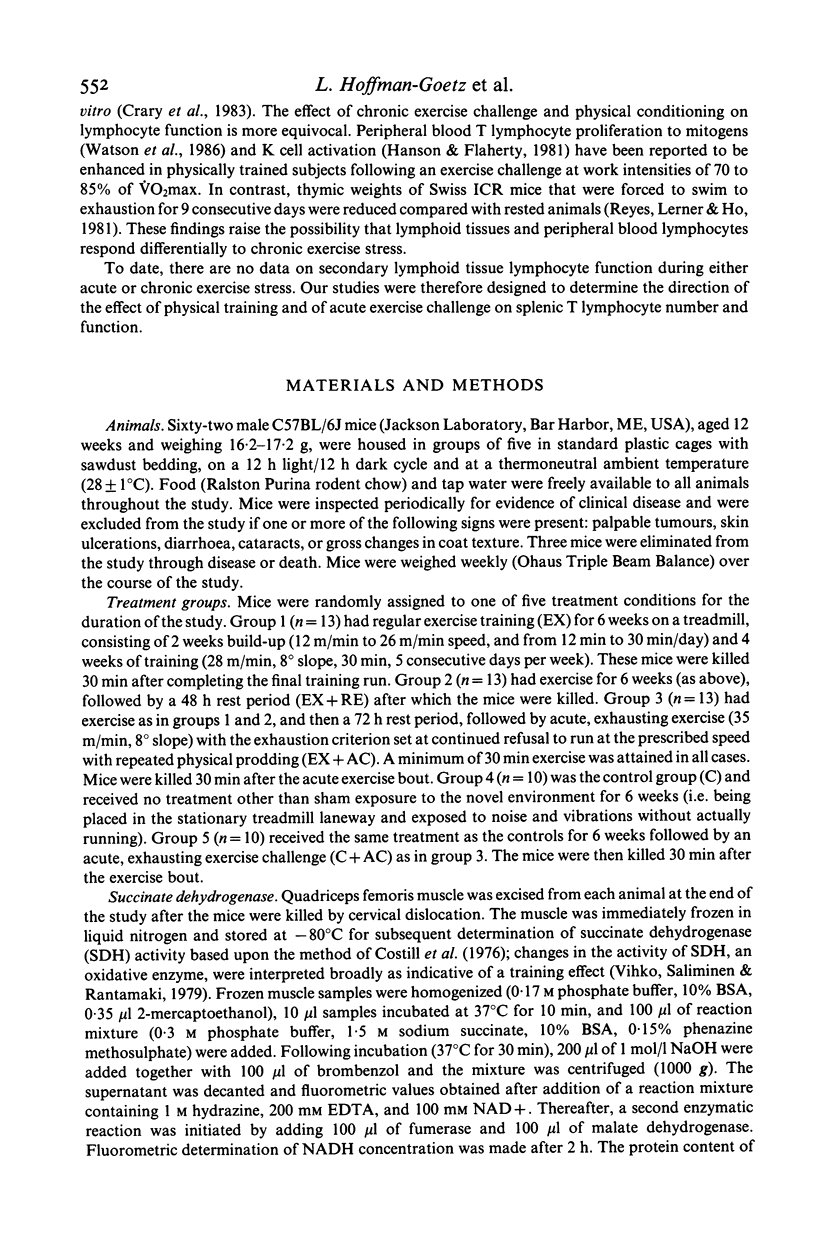
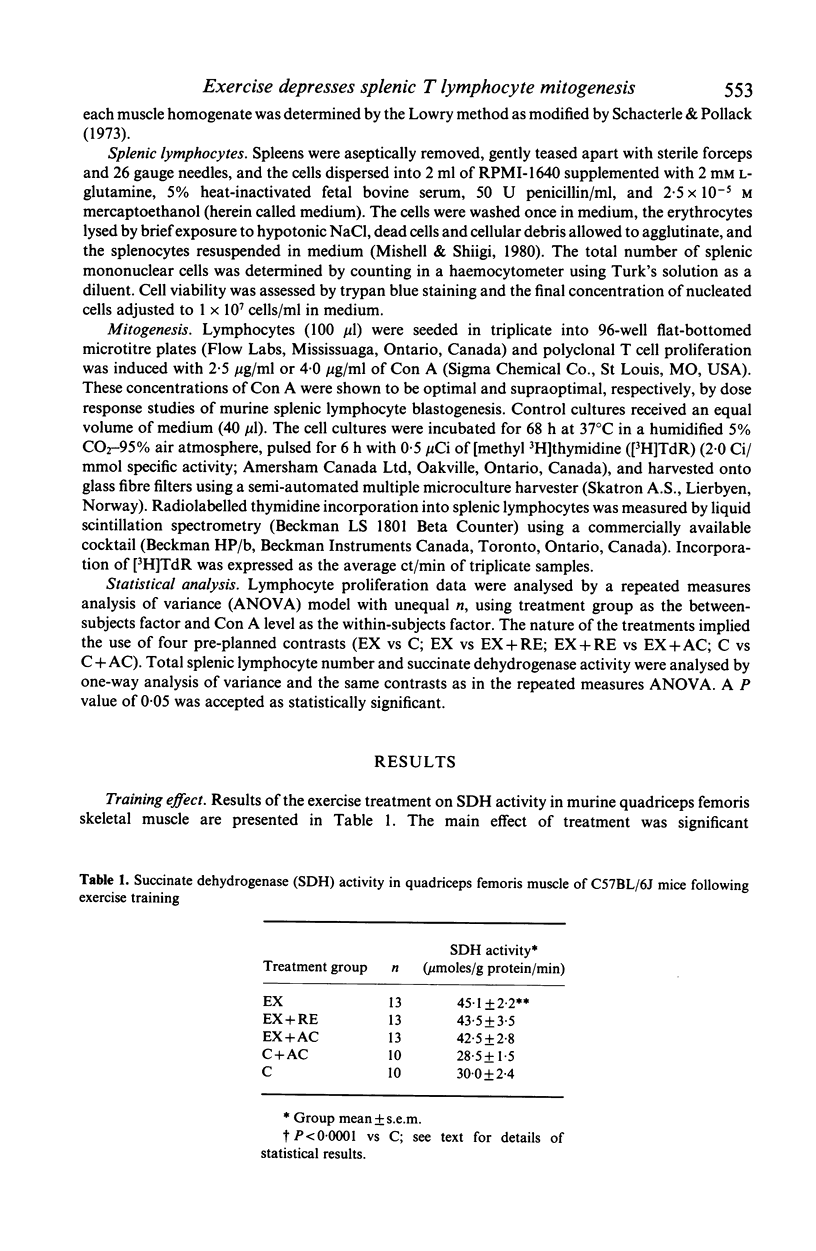
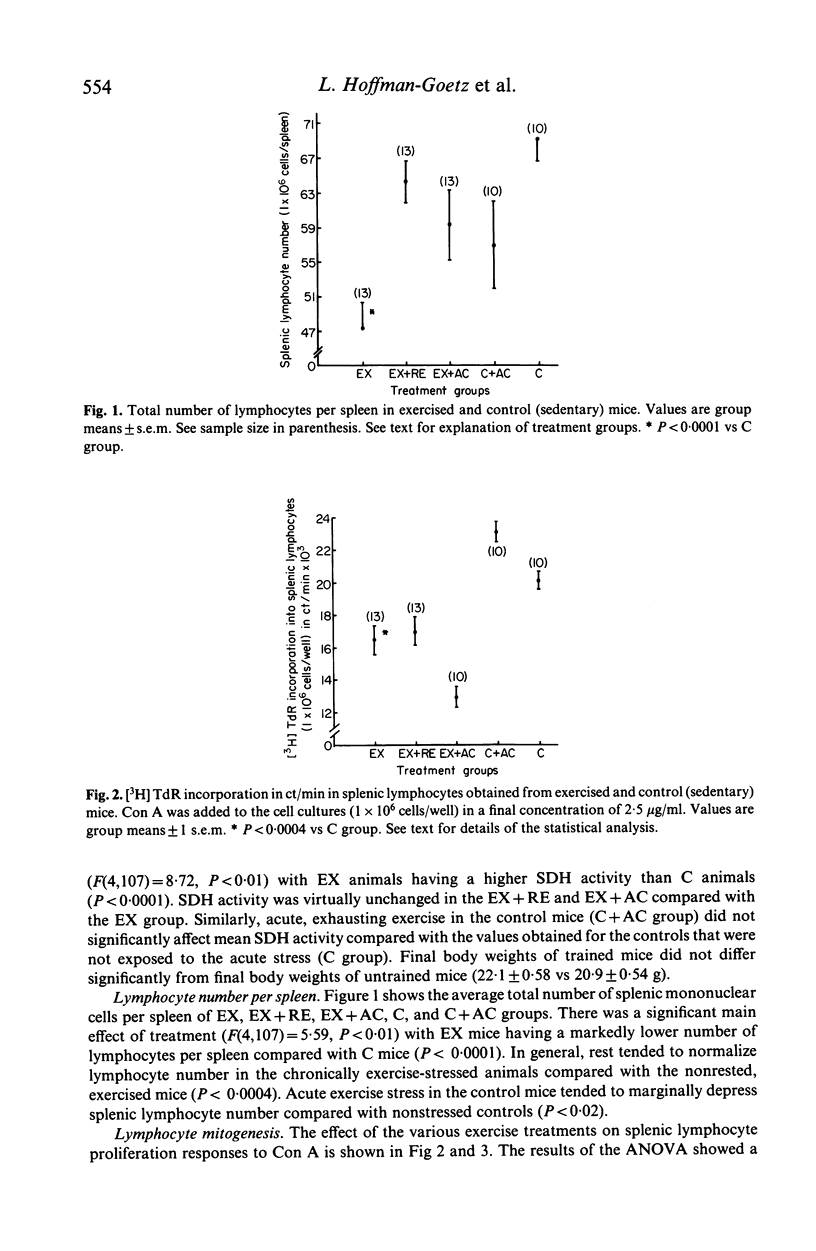
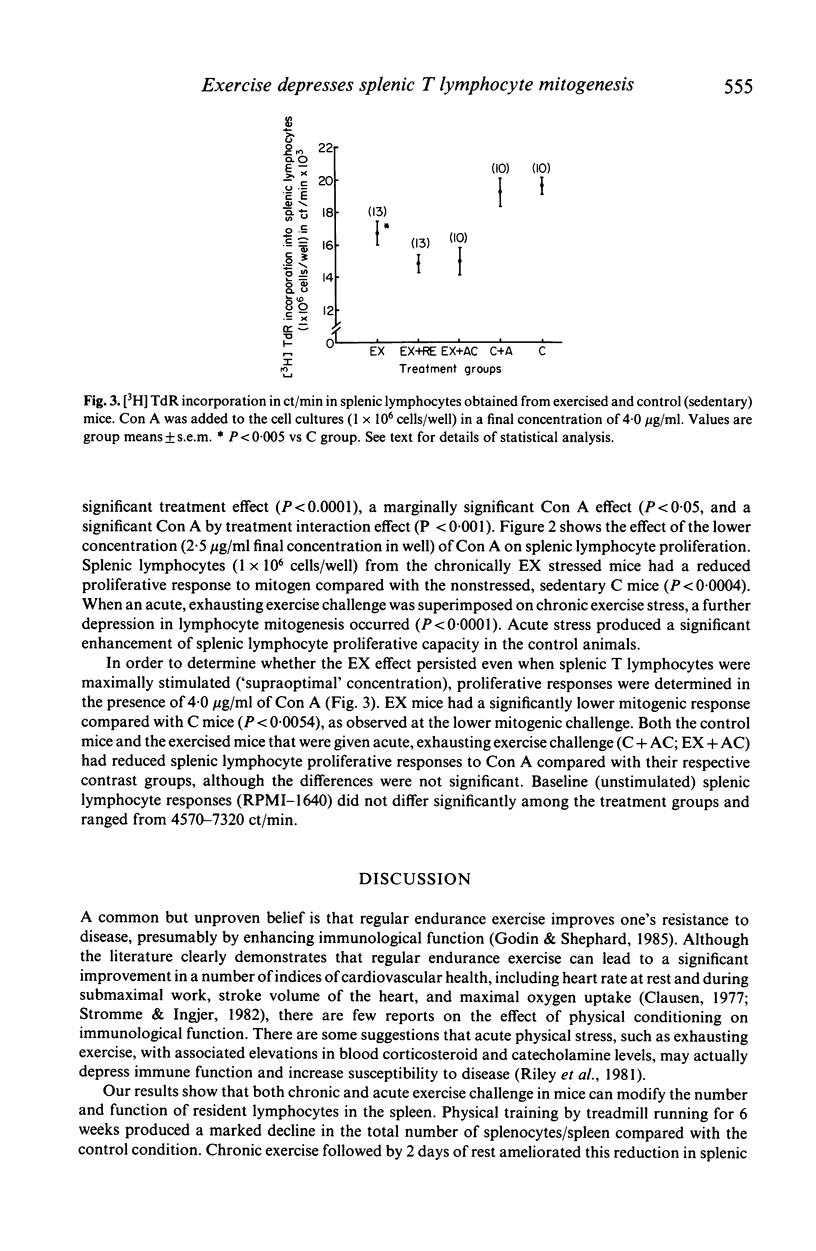
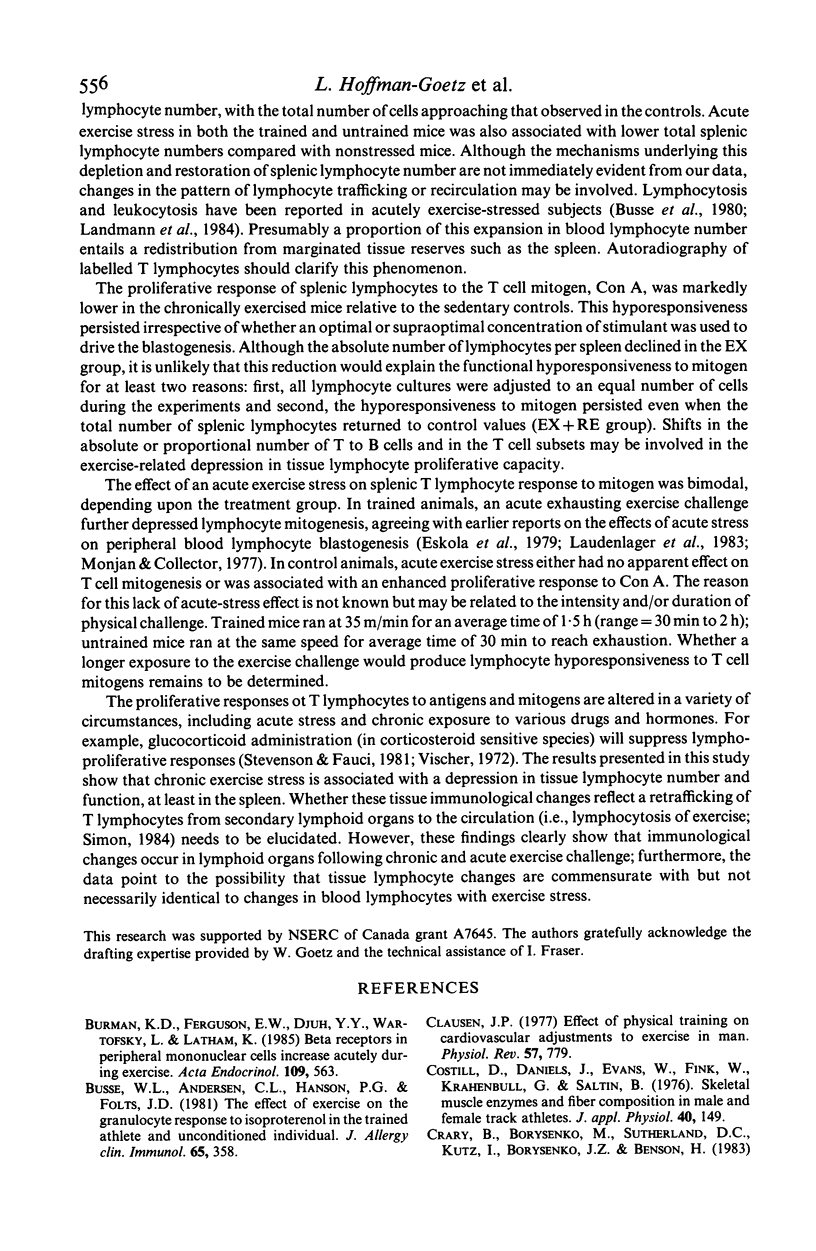
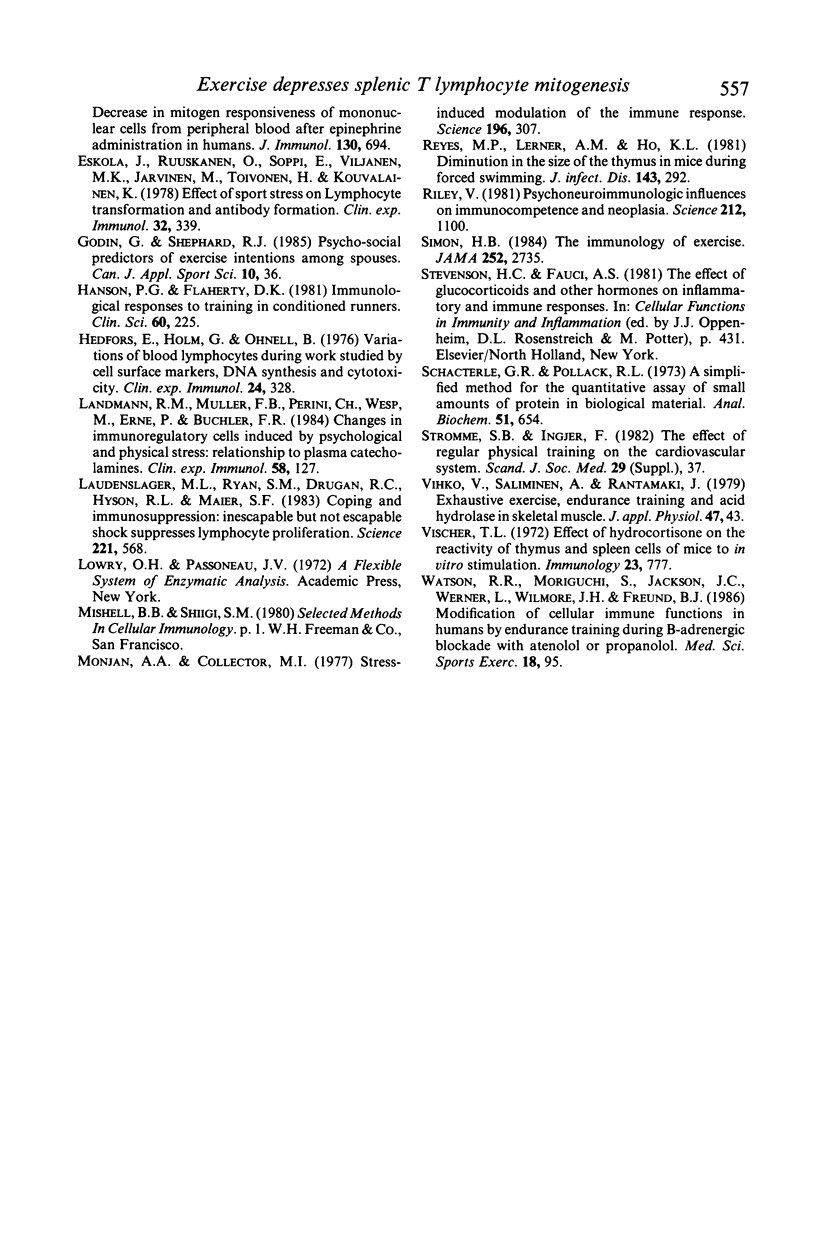
Selected References
These references are in PubMed. This may not be the complete list of references from this article.
- Burman K. D., Ferguson E. W., Djuh Y. Y., Wartofsky L., Latham K. Beta receptors in peripheral mononuclear cells increase acutely during exercise. Acta Endocrinol (Copenh) 1985 Aug;109(4):563–568. doi: 10.1530/acta.0.1090563. [DOI] [PubMed] [Google Scholar]
- Busse W. W., Anderson C. L., Hanson P. G., Folts J. D. The effect of exercise on the granulocyte response to isoproterenol in the trained athlete and unconditioned individual. J Allergy Clin Immunol. 1980 May;65(5):358–364. doi: 10.1016/0091-6749(80)90213-4. [DOI] [PubMed] [Google Scholar]
- Clausen J. P. Effect of physical training on cardiovascular adjustments to exercise in man. Physiol Rev. 1977 Oct;57(4):779–815. doi: 10.1152/physrev.1977.57.4.779. [DOI] [PubMed] [Google Scholar]
- Costill D. L., Daniels J., Evans W., Fink W., Krahenbuhl G., Saltin B. Skeletal muscle enzymes and fiber composition in male and female track athletes. J Appl Physiol. 1976 Feb;40(2):149–154. doi: 10.1152/jappl.1976.40.2.149. [DOI] [PubMed] [Google Scholar]
- Crary B., Borysenko M., Sutherland D. C., Kutz I., Borysenko J. Z., Benson H. Decrease in mitogen responsiveness of mononuclear cells from peripheral blood after epinephrine administration in humans. J Immunol. 1983 Feb;130(2):694–697. [PubMed] [Google Scholar]
- Eskola J., Ruuskanen O., Soppi E., Viljanen M. K., Järvinen M., Toivonen H., Kouvalainen K. Effect of sport stress on lymphocyte transformation and antibody formation. Clin Exp Immunol. 1978 May;32(2):339–345. [PMC free article] [PubMed] [Google Scholar]
- Godin G., Shephard R. J. Psycho-social predictors of exercise intentions among spouses. Can J Appl Sport Sci. 1985 Mar;10(1):36–43. [PubMed] [Google Scholar]
- Hanson P. G., Flaherty D. K. Immunological responses to training in conditioned runners. Clin Sci (Lond) 1981 Feb;60(2):225–228. doi: 10.1042/cs0600225. [DOI] [PubMed] [Google Scholar]
- Hedfors E., Holm G., Ohnell B. Variations of blood lymphocytes during work studied by cell surface markers, DNA synthesis and cytotoxicity. Clin Exp Immunol. 1976 May;24(2):328–335. [PMC free article] [PubMed] [Google Scholar]
- Landmann R. M., Müller F. B., Perini C., Wesp M., Erne P., Bühler F. R. Changes of immunoregulatory cells induced by psychological and physical stress: relationship to plasma catecholamines. Clin Exp Immunol. 1984 Oct;58(1):127–135. [PMC free article] [PubMed] [Google Scholar]
- Laudenslager M. L., Ryan S. M., Drugan R. C., Hyson R. L., Maier S. F. Coping and immunosuppression: inescapable but not escapable shock suppresses lymphocyte proliferation. Science. 1983 Aug 5;221(4610):568–570. doi: 10.1126/science.6603018. [DOI] [PubMed] [Google Scholar]
- Monjan A. A., Collector M. I. Stress-induced modulation of the immune response. Science. 1977 Apr 15;196(4287):307–308. doi: 10.1126/science.557841. [DOI] [PubMed] [Google Scholar]
- Reyes M. P., Lerner A. M., Ho K. L. Diminution in the size of the thymus in mice during forced swimming. J Infect Dis. 1981 Feb;143(2):292–292. doi: 10.1093/infdis/143.2.292. [DOI] [PubMed] [Google Scholar]
- Riley V. Psychoneuroendocrine influences on immunocompetence and neoplasia. Science. 1981 Jun 5;212(4499):1100–1109. doi: 10.1126/science.7233204. [DOI] [PubMed] [Google Scholar]
- Schacterle G. R., Pollack R. L. A simplified method for the quantitative assay of small amounts of protein in biologic material. Anal Biochem. 1973 Feb;51(2):654–655. doi: 10.1016/0003-2697(73)90523-x. [DOI] [PubMed] [Google Scholar]
- Simon H. B. The immunology of exercise. A brief review. JAMA. 1984 Nov 16;252(19):2735–2738. [PubMed] [Google Scholar]
- Strømme S. B., Ingjer F. The effect of regular physical training on the cardiovascular system. Scand J Soc Med Suppl. 1982;29:37–45. [PubMed] [Google Scholar]
- Vihko V., Salminen A., Rantamäki J. Exhaustive exercise, endurance training, and acid hydrolase activity in skeletal muscle. J Appl Physiol Respir Environ Exerc Physiol. 1979 Jul;47(1):43–50. doi: 10.1152/jappl.1979.47.1.43. [DOI] [PubMed] [Google Scholar]
- Vischer T. L. Effect of hydrocortisone on the reactivity of thymus and spleen cells of mice to in vitro stimulation. Immunology. 1972 Nov;23(5):777–784. [PMC free article] [PubMed] [Google Scholar]
- Watson R. R., Moriguchi S., Jackson J. C., Werner L., Wilmore J. H., Freund B. J. Modification of cellular immune functions in humans by endurance exercise training during beta-adrenergic blockade with atenolol or propranolol. Med Sci Sports Exerc. 1986 Feb;18(1):95–100. [PubMed] [Google Scholar]


